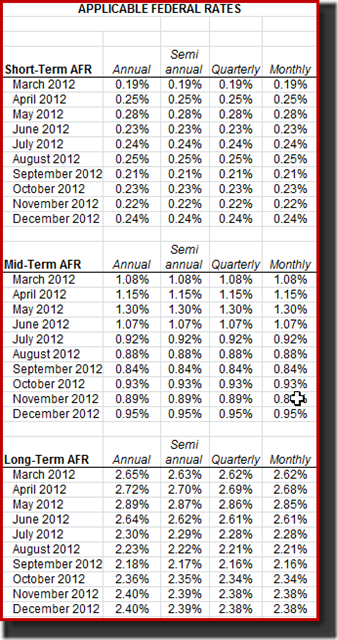New Proposed Regulations expand the class of persons who can issue written advice that a foreign organization is eligible to receive grants from a private foundation that constitute qualifying distributions for Code §4942 minimum distribution requirements and that are not taxable expenditures under Code §4945. Previously, such persons included only legal counsel for the donor or donee organization. Now, other attorneys, CPAs and enrolled agents can do so.
FACTS: Distributions to foreign organizations by private foundations can run afoul of two excise tax provisions. First, Code §4942 imposes a minimum level of distributions to qualified recipients each year. Unless a private foundation has enough distributions to other qualified recipients to meet the minimums, it will want distributions to foreign organizations to count towards the minimum. Second, Code §4945 imposes an excise tax on a private foundation’s “taxable expenditures.” Taxable expenditures include expenditures for other than a charitable purpose. Private foundations making grants to foreign organizations want those grants to avoid being characterized as a taxable expenditure.
Generally, grants for charitable purposes to certain foreign organizations may be treated as qualifying distributions under Code §4942 if the private foundation determines that the foreign organization is an organization described in sections 501(c)(3) and 509(a)(1), (a)(2), or (a)(3) (i.e., it is a "public charity") that is not a supporting organization described in section 4942(g)(4)(A)(i) or (g)(4)(A)(ii) or is an organization described in sections 501(c)(3) and 4942(j)(3) (i.e., is a "private operating foundation"). However, grants to organizations controlled, directly or indirectly, by the foundation or one or more of its disqualified persons are not qualifying distributions unless the grant is redistributed for charitable purposes within the period specified in Code §4942(g)(3).
Similarly, grants for charitable purposes to certain foreign organizations may be treated as other than taxable expenditures under section 4945 if the private foundation makes a good faith determination that the foreign organization is a public charity (other than a disqualified supporting organization) or an organization described in sections 501(c)(3) and 4940(d)(2) (an "exempt operating foundation").
If the foreign organization does not have an IRS determination letter that confirms it comes within the above classes, a good faith determination by the private foundation that the foreign organization comes within the above classes will achieve the desired results under Code §§4942 and 4945. Under the current regulations, a “good faith determination” may be based on an affidavit of the foreign organization, or an opinion of counsel of either the grantor or the grantee. The affidavit or opinion must set forth sufficient facts concerning the operations and support of the grantee for the IRS to determine that the grantee would be likely to qualify within the required classes.
The new Proposed Regulations both expand and contract who can issue the above opinion. The opiner must now be a "qualified tax practitioner" who is subject to the requirements in Circular 230, including the requirements in current §§10.37 and 10.51(a)(13) (or successor provisions). A qualified tax practitioner means an attorney, a certified public accountant ("CPA"), or an enrolled agent, as those practitioners are defined in §§10.2 and 10.3 of Circular 230, and thus expands who can issue the opinion. However, the class is contracted to exclude foreign counsel unless the foreign counsel is a qualified tax practitioner.
The written advice must meet the requirements of Treas. Regs. §1.6664-4(c)(1), which are the standards that must be taken into account in determining whether a taxpayer has reasonably relied in good faith on advice for purposes of Code §6664. Additionally, as is the case under the present regulations under Code §§4942 and 4945, the written advice must provide sufficient facts about the operations and financial support of the foreign organization for the IRS to determine that the grantee would be likely to qualify as a public charity (other than a disqualified supporting organization) or as a private operating foundation or an exempt operating foundation, as applicable.
While the above changes are in Proposed Regulations, the Proposed Regulations indicate that they may be relied upon on or after September 24, 2012 (unless and until subsequently revised by the IRS including via Temporary or Final Regulations).
COMMENTS. Private foundations are often discouraged from making grants to foreign charitable entities because of the expense involved in making the above determinations. By expanding the class of persons who can provide the requisite opinions to include CPA’s and enrolled agents, the cost of such determinations may decrease. The Treasury Department also believes that by making it easier for private foundations to obtain such opinions, this will encourage more private foundations to obtain written tax advice and thus improve the quality of the determinations being made.
Absent regularly practicing in this area, the time involved for professionals to familiarize themselves with requirements of Code §§4942 and 4945 as to foreign grants (including the above rules) is itself a built-in cost to private foundations making foreign grants. One has to wonder how many enrolled agents have the knowledge or experience to properly address these issues. Nonetheless, the desire of the Treasury Department to reduce costs and expand the class of persons who can make opinions is to be commended.
However, the Treasury Department and the IRS are considering future amendments to take away the ability of the private foundation to rely on an affidavit of the foreign organization, which is an existing alternative to obtaining an opinion of counsel. For those organizations that can obtain such an affidavit, one would think that removing its use would actually raise the cost of compliance. Since the purpose of these modifications is to reduce taxpayer cost, hopefully the Treasury Department and the IRS will not undertake such a change.
REG-134974-12, Preamble to Proposed Treasury Regulations (09/21/2012); Proposed Treas. Regs. §53.4942(a)-3; Proposed Treas. Regs. §53.4945-5






![SNAGHTML12c34218[4] SNAGHTML12c34218[4]](http://lh5.ggpht.com/-8WBv7J7BRfY/UK4sI9UbDUI/AAAAAAAAAcA/vzoXZNPhInE/SNAGHTML12c34218%25255B4%25255D_thumb.png?imgmax=800)



![SNAGHTML9c9058e[4] SNAGHTML9c9058e[4]](http://lh3.ggpht.com/-odUHi_4xvIk/UFuk4fSyOII/AAAAAAAAAaM/F7OcpyyWirM/SNAGHTML9c9058e%25255B4%25255D_thumb%25255B1%25255D.png?imgmax=800)





